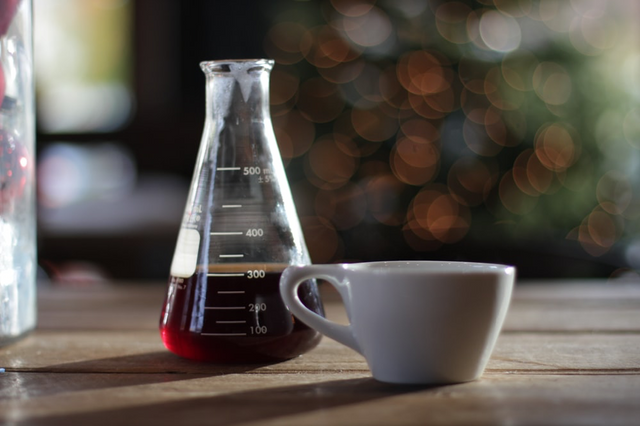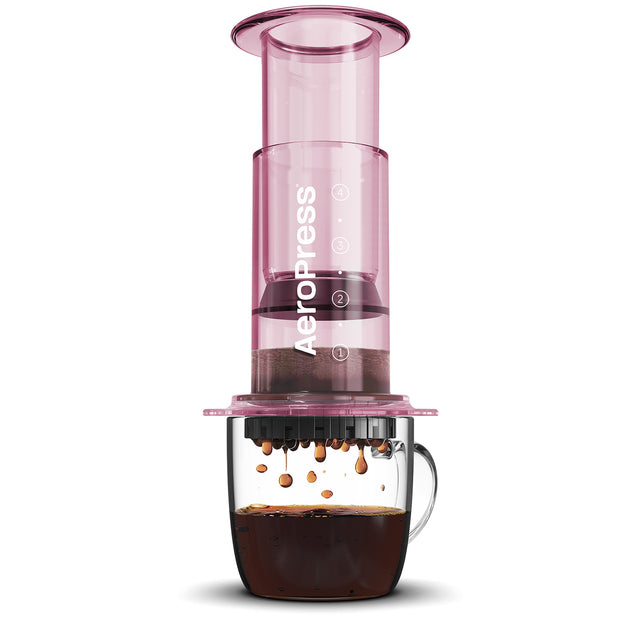What is in Coffee? | Coffee Chemistry
Many of us rely on a good cup of coffee to get us through the morning or to perk us up in the afternoon, but have you ever wondered what is in your cup?!
Of course, we have all heard of caffeine, and know how it helps us feel more awake, but there is far more packed into your mug than just this compound.
Today, we explore the science behind the brew, looking into the chemistry of your coffee.

Caffeine
We’ll start with the most obvious – caffeine! Caffeine is a natural stimulant that can help you to feel more energetic and alert. Things like brewing method and the coffee beans you use can have an impact on how much caffeine is in your coffee.
For example, Robusta coffee has more caffeine in than Arabica. Robusta has 2.7% caffeine, while Arabica has 1.5%.
As well as offering benefits for the drinker, caffeine is also essential for the coffee plant itself. Caffeine is an alkaloid plant toxin, which helps the plant to deter and kill any bugs that try to eat the leaves or berries. The caffeine acts like an inbuilt safety mechanism.

Trigonelline
Trigonelline is a compound that is found in coffee. It is responsible for the flavour and aroma of the coffee beans that are developed during the roasting process.
While caffeine is found more in Robusta, more Trigonelline is present in Arabica beans. This is why Arabica is considered the more flavourful and aromatic coffee out of the two main types of bean.
If your coffee has a caramel or earthy aroma, then this is due to the Trigonelline.
Besides adding flavour and aroma to your brew, Trigonelline has also been found to help fight cavities by removing bacteria in your mouth!
Niacin
When Trigonelline reaches 70 degrees Celsius, it becomes unstable and breaks down into Niacin – otherwise known as vitamin B3. As we know, vitamins are great for our health, with vitamin B3 known to help lower cholesterol, boost brain power and ease arthritis.
Only 90ml of strong coffee provides half of your daily recommended level of Niacin!

Chlorogenic Acids
Chlorogenic acids refer to the antioxidants that are packed into your coffee. Coffee naturally contains chlorogenic acids, with 10% of the weight of an unroasted green coffee bean coming from them. In fact, coffee has the highest concentration of this compound of any edible item!
However, as the coffee is roasted, the amount of chlorogenic acid reduces in the coffee bean.
Chlorogenic acids are considered to be good for you, with it believed that they could help to promote weight loss and lower the risk of diabetes.
Robusta beans will typically contain more chlorogenic acids than Arabica beans.
Quinic Acid
Another acid commonly found in coffee is quinic acid. Quinic acid increases in coffee during the roasting process.
Quinic acid is considered to make coffee taste more acidic or sour. This is particularly the case when coffee is left in a warmed place for a long time, such as a coffee pot left on a heating plate or in a carafe.
3.5 Dicaffeoylquinic Acid
A sub-type of quinic acid, the 3.5 Dicaffeoylquinic Acid is an antioxidant that helps to protect cells from free-radical damage.

2-Ethylphenol
Coffee contains a phenol compound known as 2-Ethyphenol. This compound can impart a slightly tar-like, medicinal aroma into the coffee.
Acetylmethylcarbinol
If you love the rich and buttery notes of your coffee, then you have Acetylmethylcarbinol to thank. Acetylmethylcarbinol is found in actual butter and is used to flavour popcorn as well.
Water
How could we forget good old H2O! Your coffee is actually at least 98% water, so it is actually a very important part of the coffee-making process.
Hot water is a solvent and helps to draw the flavour and oils out of the coffee bean to make a perfect brew!
All of these elements combine to create the brew you know and love! If you find that the acidic notes in your coffee are too strong for your taste, then there are a few ways in which you can alter the acidity levels in your coffee, such as brewing with an AeroPress UK coffee maker!


0 Comments
There are no comments for this article. Be the first one to leave a message!